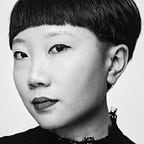The Paradox of Virtual Reality
The Jewish Museum just wrapped up its year of design with a trifecta of exhibitions that began in March 2016 with Isaac Mizrahi: An Unruly History, followed by Roberto Burle Marx: Brazilian Modernist last fall, and ending with Pierre Chareau: Modern Architecture and Design, which concluded last week. It’s been exciting to be a part of this extraordinary lineup of exhibitions presenting the work of innovators in fashion, landscape architecture, and interior design—each uniquely positioned as individual narratives about Jewish identity and its global reach. It’s what we do best.
Pierre Chareau: Modern Architecture and Design was the first exhibition in the United States to focus on the French designer and architect. Pierre Chareau (1883–1950) was a prolific furniture designer and art collector who was virtually unknown to American audiences. Although never formally trained in architecture, Chareau’s uncontested masterpiece was the Maison de Verre, the Glass House built in Paris 1928–32 in collaboration with the Dutch architect Bernard Bijvoet and the ironsmith Louis Dalbet.
Courtesy Diller Scofidio + Renfro
The Maison de Verre was technologically advanced and ahead of its time. Commissioned by Chareau’s patrons and close friends, Annie and Jean Dalsace, it was daring in its use of exposed industrial materials. Its facades, front and back, were made entirely of translucent and transparent glass, unusual for the period. In the grand salon, I-beams and industrial rubber tiles coexisted with devices in wrought iron and Chareau’s custom-made furniture in rare woods. The house became an icon of modern architecture, and a meeting place for artists, musicians, writers, and intellectuals.
Courtesy Diller Scofidio + Renfro
To bring the Maison de Verre to life without having to physically transport the structure to New York, the interdisciplinary studio Diller Scofidio + Renfro (DS+R), the exhibition designers for Pierre Chareau, employed Virtual Reality as well as other forms of technology throughout the exhibition as an interpretive tool to translate the experience of visiting the house and the objects in it using the innovative technologies of today, to rave reviews. For the visitors who put on VR headsets, the furniture by Chareau displayed within the gallery would suddenly reappear in VR, in situ, in Paris. Beyond our visitors who were mesmerized by the potential of technology to immerse and transport, The New Yorker called it “a rare achievement in exhibition design” and The New York Times, “a delightful, virtual-reality-enhanced examination of the designer’s work.”
Courtesy Diller Scofidio + Renfro
Virtual Reality is not new to the museum or art gallery experience, but presents an unexpected challenge in its current limitation to restrict the potential audience of its contents. Artists from Jon Rafman to Rachel Rossin have led the effort, with the lines to prove it. Although born digital, the paradox of Virtual Reality lies in its reliance on devices that are not yet widely available to the public. According to the Pew Research Center 77% of Americans own smartphone devices, whereas less than 2% own VR headsets.
At the inception of our project at the Jewish Museum, with only four stations on tethered Samsung Gear VR devices, it became clear that components of the in-gallery experience needed to exist on a more widely accessible digital platform. A VR app was considered at first, but in the interest of creating the lowest possible barrier, the experience needed to exist on the Jewish Museum’s website and mobile site—the lowest common denominator for the “digital visitor.” Not all visitors to the Jewish Museum website intend to visit the Museum on-site, or even come to New York, but now the web could theoretically take them to Paris. This “visitor” furthermore, could experience the content from anywhere online, even after the exhibition closed, and the headsets removed from our galleries.
Courtesy Diller Scofidio + Renfro
In collaboration with DS+ R, who converted the VR experience of Pierre Chareau’s Maison de Verre and other interiors into 360° views as HTML5 files for web and mobile, the experience was made available as individual webpages on the Jewish Museum website. Unlike the gesture of seamlessly navigating through the movement of your own head on VR headsets, the web version was still predicated on a user interface: buttons for navigating direction, zoom functionality, rotations, and full screen capabilities.
By the close of the exhibition, we welcomed more than 47,000 visitors to Pierre Chareau: Modern Architecture and Design at the Jewish Museum, but more than 95,000 users interacted with the exhibition online. Furthermore, the digital experience of navigating Chareau’s extraordinary projects rendered by DS+R in Virtual Realty has now been made available to a global, location- and platform-agnostic audience.
On the Jewish Museum website, we invite you to explore 360° views of:
The Grand Salon of the Maison de Verre, Paris
The garden of the Maison de Verre, Paris
The study in the Pierre Chareau residence, Paris
The Farhi Apartment, Paris
What is the future of Virtual Reality in museums? The speed in which this technology has evolved in the last few years has been staggering. With Google cardboard devices available for only $15, wider consumer access to the platform is near. Contemporary artists furthermore have been embracing VR as a new artistic medium, supported by institutions such as the New Museum and their latest digital commission First Look: Artists’ VR, which enables viewing of commissioned artist projects on a mobile VR app. For now, at least in my opinion, the future of Virtual Reality is about coming to terms with the reality of its own paradox.
